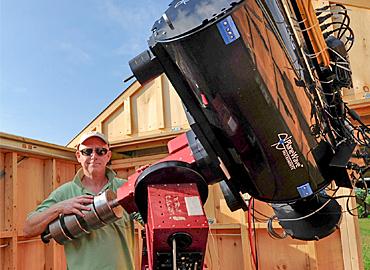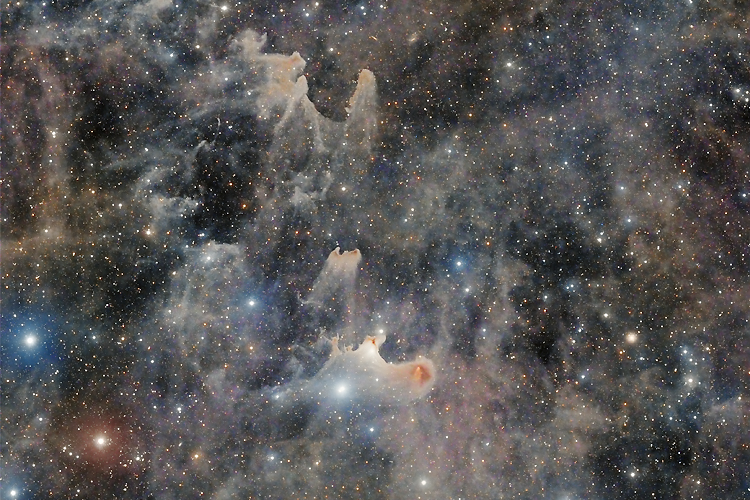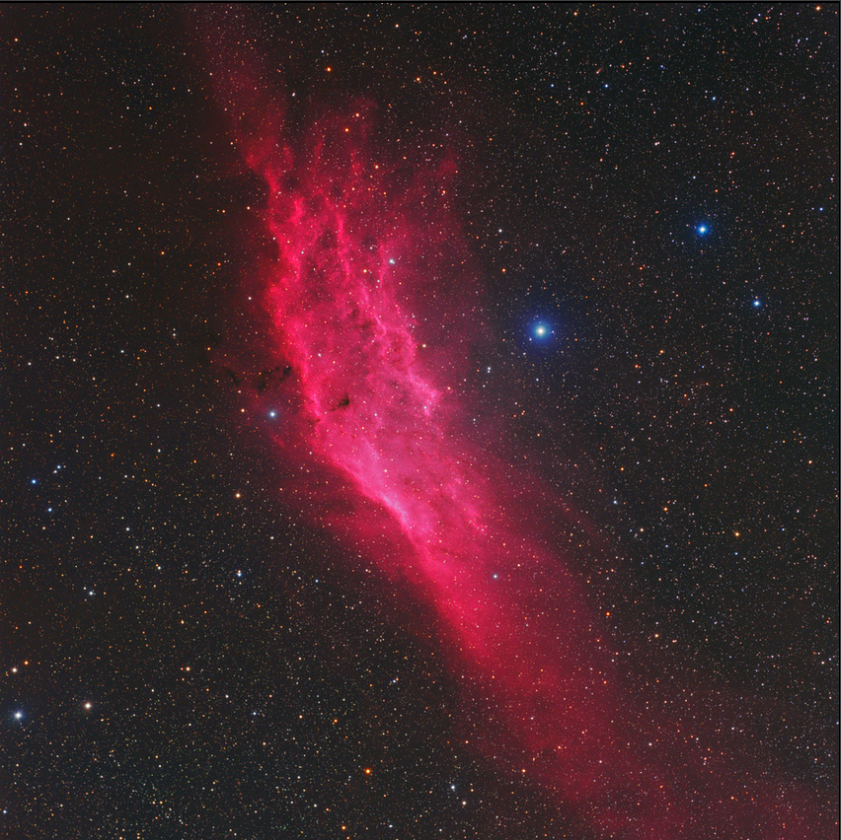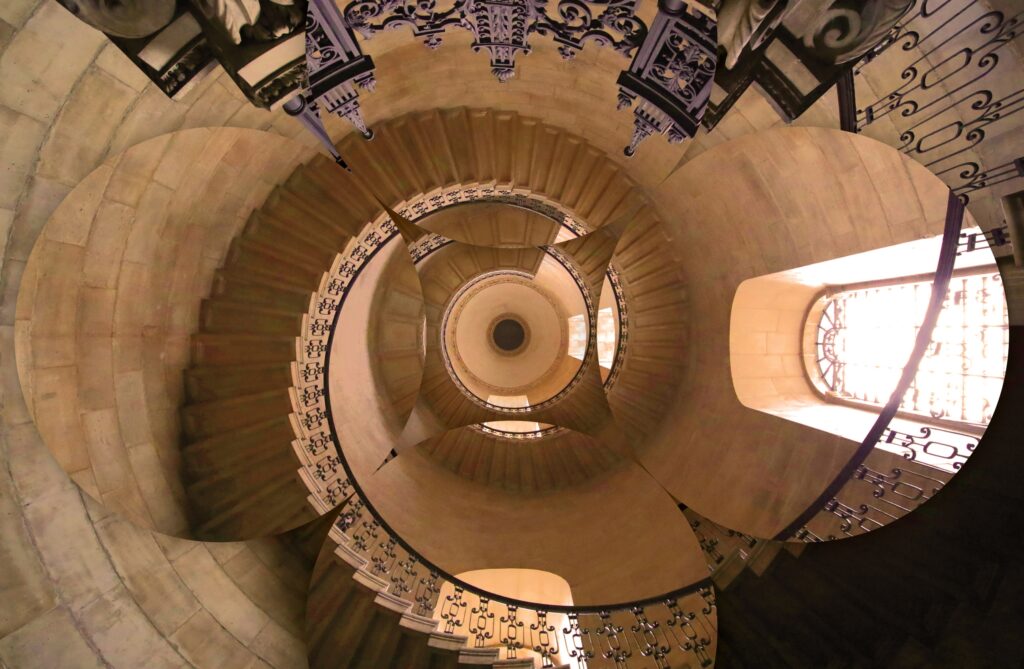Our next concert program is Staircases: a new multimedia program by acclaimed creator and former Tafelmusik principal double bassist Alison Mackay.
Mackay’s programs are renowned for including visual imagery to complement and accompany the music being performed. For this latest project, she sought the participation of astrophotographer Stuart Heggie to capture and create images of The Seven Sisters asterism, as it would have been seen in the baroque era.
In this interview, meet Heggie and learn more about his fascinating practice.

How did you come to know and work with Alison Mackay, the creator of Staircases?
My wife and I were season subscribers for years when we were living closer to Toronto. I’m not 100% sure if we saw The Galileo Project and then talked to Alison, or if we knew it was coming up. Either way, we were quite excited about that concert as my undergrad was in astrophysics, and I’d started pursuit of astro imaging in my midlife. We took advantage of seeing Alison in the lobby after a concert and introduced ourselves.
Somehow we got talking about astronomy, astrophotography, and so forth, Alison waved over her husband David Fallis and introduced us, and it turned out David is good friends with someone I was pals with way back in the day. That was fun. Anyway, Alison subsequently offered to include one of my pictures for the next performance of The Galileo Project. We settled on M33, also known as The Triangulum Galaxy. I was VERY honoured. It was projected for the entire intermission.
You practice “astrophotography”, where photography meets astronomy—can you tell us how you got into this? Is it your full-time job, or your passion?
Astrophotography was the natural melding of my lifelong passion for photography and my undergraduate studies. Budget is a big factor in astrophotography, so it wasn’t till midlife when funds were available to buy the requisite gear.
It’s a VERY addictive hobby, so shortly after plunging into it I had built an 8×12′ roll-off roof observatory to house astro setups, and subsequently automated it so I could image while travelling on business. At this point I was a single dad with two young boys, so I wanted a hobby I could do from home and ideally one that I could do while watching a movie with my kids. Automating my astrophotography allowed me to keep part of one eye on a laptop screen while we watched TV, and confirm that my imaging runs were going okay. Decadent, eh?

What special equipment does astrophotography require?
Equipment needed for astrophotography is basically:
- A camera—ideally one designed and built for this purpose. There are many choices nowadays, I prefer monochrome cameras with filter wheels in front of the sensor so that I can dictate what colours I want to photograph and what specialized wavelength filters I want to include in the normal colour palette;
- A telescope. Good-to-excellent optics are desirable, but honestly this is the least significant part of the setup;
- A mount that can track and control the pointing. This is the most important part—solid mount, very accurate and you’re golden.
Beyond that you need dew-control systems, and a way to improve the mount performance by “auto guiding,” which is a second small camera to tell the mount “speed up! slow down! move up a bit! ooops, back down a bit!”
Then, there is software to turn all these monochrome images into a colour picture. You have to calibrate each picture: removing sensor noise, correcting for vignetting, removing any dust donuts, then registering all the images, stacking all the ones from the same filter to improve the signal-to-noise ratio and then combining this all into a colour photo. There is lots of software out there that can do some or all of this.

You are based in Lucknow, Ontario: did you choose this location for astrophotography purposes? Do you have to deal with light pollution?
When we anticipated retirement, we sought out a location that would be ideal for both of us. My wife spent summers along the Lake Huron shores in her youth, I did that to an extent as well. We also wanted privacy and to have a farm and play a role in the food chain. It also needed to be dark for astrophotography. Buying a farm in Mennonite country assured us of lower light pollution, for sure. We were near certain about the place we bought but came by very late one night, parked down the road slightly, turned off the car and just appreciated the darkness and silence.
One of the staircases Alison’s concert focuses on is Christoper Wren’s Monument to the Great Fire of London: completed in 1677, it was initially meant to dually function as a zenith telescope, but vibrations from street traffic rendered the telescope unusable. For Staircases, you captured an image of The Pleiades, a bright asterism that the people of that time would have been able to see and wonder about. How did you go about taking this photo?
The choice of object to display was made by Alison. The Pleiades, also known as The Seven Sisters (named after the Muses of Greek Mythology) was an excellent choice. It is bright and has been known since antiquity. People in Christopher Wren’s time would have been able to see it easily in their night sky. It was taken with a short focal length premium refractor and an astro-modified DSLR (Nikon D810a). 11 pictures were taken and then registered and stacked before being further processed to bring out the faint gas clouds surrounding the bright stars.
Is there any particular music—baroque or otherwise—that you like to work to, or that you associate with the stars?
My favourite music is baroque, followed by early music. I really took to Hildegard von Bingen’s music after hearing a rendering of some of it by The Empire Brass. She was a remarkable woman, the first modern Western composer some say. And astronomy literate. All round amazing. (A note: I’m not remotely religious but definitely appreciated her work and I think she gets far too little credit today.)
A nerdy astronomy-related question: a total solar eclipse is coming this April 8, 2024, and southern Ontario is in the path of totality. Do you have any special plans?
We definitely plan to travel down to near Hamilton to get into the path of totality for the April 8th eclipse. A friend of ours, a talented astrophotographer as well, has said we can come and set up at her place. Will be fun I hope. Weather permitting of course.
Do you have any advice for novices interested in astrophotography?
Advice for aspiring astrophotographers? (Gandalf says that a wise man never gives advice, by the way!)
Hmmm. I would say: Go for it! Don’t be intimidated. Start simply. Camera on tripod. Dark site. Skyscapes. Learn about composition, learn your camera. Then put your toe in the tracked photography pool and get a lightweight portable tracking mount for under $500, and start to extend your focal length to medium telephoto. If through-the-telescope seems to be your thing, you’ll know by this point.
Then you need a more serious mount (still portable) and probably an astronomy specific camera and some portable computing. At some point, get a balaclava as the funds you’ll need to get deep into this can be high and you may want to resort to robbing banks… kidding!
Anything else you’d like to share?
My wife and I are so thrilled to be able to call Alison a friend. Even if we don’t hang out, being able to say we know someone with this much talent and who is SO nice on top of all that… WOW!

A pinnacle of our 45th-anniversary season, Staircases is a new creation by Alison Mackay, whose award-winning multimedia programs have enhanced Tafelmusik’s reputation for artistic innovation. The concert is designed in collaboration with the acclaimed American bass-baritone and composer Jonathan Woody, who acts as narrator, singer, and creator of a new work.
March 22-24, 2024
Jeanne Lamon Hall
